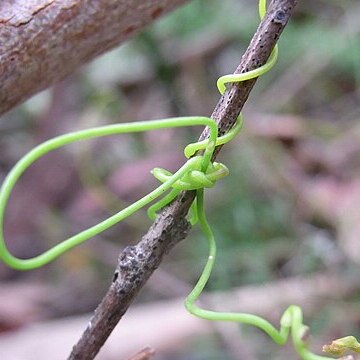Stem (0.2–) 0.5–1 mm thick, glabrous, green or yellow to red-green, smooth, drying yellow-brown. Inflorescence a cluster or head, (2–) 5–10-flowered, single or rarely paired; peduncles (4–) 8–15 × c. 0.5 mm, usually narrower basally, glabrous. Floral bracts whorled, rarely inserted at 2 levels, glabrous; bract ovate, 1–1.5 × 0.5–1 mm, basifixed, light green to yellow-green tinted red with narrow scarious margin, bracteoles similar, smaller, c. 1 mm long. Flowers ovoid to obovoid, 1.3–2 (–3.2) × 1 (–2) mm, mostly white, rarely yellowish, sessile or rarely pedicellate. Sepals ovate, 0.5–1 × 0.4–0.8 mm, acute, glabrous, yellow-green, with white or yellow scarious margin. Petals ovate to oblong-ovate, 1–2 (–3) × 0.8–1 (–1.5) mm, subacute, glabrous or very rarely pubescent inside (f. bicallosa ), white, drying yellow-brown. Fertile stamens 9. Staminodes pyramidal to wedge-shaped, 0.7 (–1) × 0.2–0.3 mm, shortly stalked, white; gland ovoid to obovoid, ¾ size of staminodes, white. Ovary fusiform, c. 0.8 (–1.5) × 0.3–0.5 mm, white, glabrous. Receptacular tube glabrous inside. Fruit ovoid to fusiform or globular, 4.4–11 × 2.3–3.5 mm, green to yellow-green, drying green or yellow and translucent, to reddish, often having 6 prominent, longitudinal veins or a glandular rim on top.
More
A twining plant. It is without hairs and keeps growing from year to year. The stems are greenish-brown to yellow-orange. Plants have small suckers along the stem which attach to trees. It climbs 1-2 m high and spreads 1-3 m wide. The leaves are very small and scale like. The flowers are very small and white or cream. The fruit have a succulent outer part. There is one seed inside. The fruit are 6-7 mm long. The fruit are edible.

